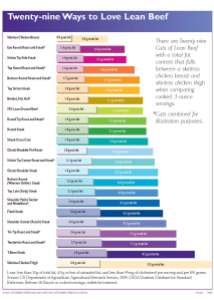Updates to reporting of Equine Vesicular Stomatitis
 Dr Marty Zaluski, Montana State Veterinarian
Dr Marty Zaluski, Montana State Veterinarian
The United States is experiencing another active year of vesicular stomatitis (VS) in horses. VS is a regulatory concern (and reportable) because when found in cattle, it is clinically indistinguishable from foot and mouth disease (FMD). While FMD does not affect equines, the presence of VS in horses allows us to avoid panic mode when multiple cattle with vesicles in the same geographical area are detected.
The 2014 season’s VS count finished in March 2015 with a near record of 420 affected premises in four states. For the current season, the count already stands at 490 premises in 6 states including Arizona (36), Colorado (251), Nebraska (14), New Mexico (48), South Dakota (42), Texas (3), Utah (24), and Wyoming (72). These counts represent total premises; many of which have since been released from quarantine.
The World Animal Health Association recently removed VS from the list of immediately reportable diseases. This change at the international level, and the 2014 VS experience allowed the USDA to make some much needed changes to how states and practitioners respond to suspected cases of VS. I’m copying, (with my comments in italics) the key changes from the April 2015 USDA VS Interim Field Guidance document.
The quarantine period for premises with suspect or confirmed VSV cases will be reduced to 14 days from the onset of lesions in the last affected animal on the premises (instead of 21 days after lesions have healed). This reduced duration of quarantine more closely correlates with the known time period for viral shed from lesioned animals. (Lesions in severely affected horses can take months to heal and Canada refers to the affected states’ quarantines to determine import restrictions on horses and ruminants moving to Canada. This change results in much shorter restrictions on exports of horses and livestock from affected states to Canada.)
After confirmation of the first VSV case in a state, equids with suspected lesions on subsequent premises are not required to be tested, but the premises will be quarantined for the time period stated above. (Suspected premises can choose to be quarantined, rather than undergo testing.)
Accredited veterinarians may be used to collect samples and monitor premises with suspected equine VSV cases at the discretion of the state veterinarian. (Heavily affected states created an overwhelming need for federal and state personnel to collect samples and perform physical exams. Private veterinarians with the technical skills, knowledge of the location, and familiarity with the operation are often a better alternative than government personnel.)
Existing VSV-approved NAHLN laboratories may request to be activated after the first case in a state is confirmed. (The Montana Veterinary Diagnostic Laboratory will be able to test additional submissions for VS after the index case is confirmed by NVSL – this would shorten the turnaround times for results in subsequent suspected cases.)
A Foreign Animal Disease Diagnostician (FADD) will still be dispatched on all suspect cases involving cattle with lesions. (Because of the concern of foot-and mouth disease, specially trained state or federal veterinarians will continue to be used for ruminants with vesicular lesions.)
–Originally published in the September 2015 Animal Health Newsletter from the Montana Department of Livestock









